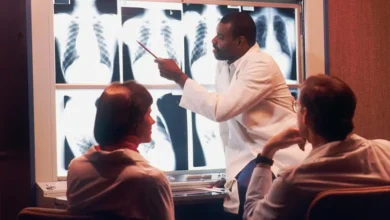How to do a breast self-exam at home

Regular breast self-exams are an important way for women to monitor their breast health. While they don’t replace professional screenings like mammograms, self-exams help you become familiar with how your breasts normally look and feel, making it easier to notice any changes. Early detection of lumps, unusual thickening, or other abnormalities can lead to early diagnosis and treatment if needed.
Here’s a simple guide to performing a breast self-exam at home:
1. Timing Matters
It’s best to do a breast self-exam once a month, a few days after your period ends when your breasts are least likely to be swollen or tender. If you no longer have periods, choose a consistent day each month to perform the exam.
2. Get in Position
You’ll want to perform your breast self-exam in a few different positions to thoroughly check all areas.
- In the shower: Many women find it easiest to feel for changes while their skin is wet and slippery. Raise one arm and use the opposite hand to examine your breast.
- In front of a mirror: Stand with your arms by your sides and visually inspect your breasts for any changes in shape, size, or skin texture. Raise your arms above your head to check for changes that might not be visible at rest. Also, place your hands on your hips and flex your chest muscles to see if you notice any dimpling, puckering, or changes around the nipples.
- Lying down: When lying down, the breast tissue spreads out more evenly, which makes it easier to feel any lumps. Place a pillow under your shoulder and raise the same-side arm behind your head. Use the opposite hand to examine the breast.
3. Use the Correct Technique
When performing the self-exam, use the pads of your fingers (not the fingertips). Press down with different levels of pressure to feel all layers of your breast tissue, from the skin to deep within the tissue. Follow a specific pattern so that you cover the entire breast. You can use one of these three methods:
- Circular motion: Starting at the outer edge of the breast, move your fingers in small circles around the breast, gradually working toward the center, including the nipple.
- Vertical lines: Move your fingers up and down across your breast, starting from the armpit and moving toward the middle of the chest.
- Wedge pattern: Begin at the outer edge of the breast and move your fingers toward the nipple, then back to the edge, covering your breast in “wedge” sections.
4. Check the Nipples
Gently squeeze each nipple to check for any discharge, such as blood, fluid, or pus. Any unusual discharge should be reported to your doctor, especially if it’s spontaneous and not associated with breastfeeding.
5. Don’t Forget the Armpit Area
Breast tissue extends into the armpit, so it’s important to check this area as well. Use the same techniques to feel for any lumps or thickening around the underarm region.
6. What to Look For
During your self-exam, you’re checking for:
- Lumps or hard knots that feel different from the surrounding tissue.
- Changes in breast size, shape, or symmetry.
- Dimpling or puckering of the skin.
- Swelling or redness that doesn’t go away.
- Nipple changes, such as inversion or discharge that isn’t milk.
- Pain or tenderness that seems unusual or persistent.
7. When to See a Doctor
If you notice any new or unusual changes during your self-exam, it’s important to consult with your healthcare provider. Not all changes or lumps mean cancer, but they should be evaluated by a professional to rule out any concerns.
Performing a breast self-exam at home is a simple, proactive step toward maintaining your breast health. By becoming familiar with what’s normal for your body, you can more easily detect any potential issues early on. However, remember that a self-exam is just one part of breast health care—routine mammograms and doctor visits are essential for comprehensive screening.
Make it a habit to do your monthly breast self-exams, and if anything feels unusual, don’t hesitate to reach out to your healthcare provider for further advice.










